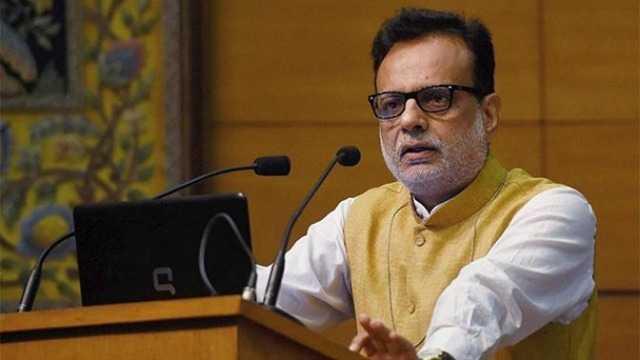New Delhi, Some rejig in the GST rate structure is required to reduce the burden on small and medium businesses, Revenue Secretary Hasmukh Adhia has said.
The Goods and Services Tax (GST), which amalgamates more than a dozen Central and state levies like excise duty, service tax and VAT, will take about a year to stabilise, he said.
“There is need for some rejig in rates… it is possible that some items in the same chapter are divided. There is a need for harmonisation of items chapter-wise and wherever we find there is a big burden on small and medium businesses and on common man, if we bring them down, there will be better compliance,” Adhia said.
Nearly four months since its introduction, the new indirect tax threw up teething troubles and compliance issues, which the GST Council — the highest decision-making body of the new regime — has addressed through several rounds of changes, he said.
Adhia, however, said the rejig would require some calculations by the fitment committee, which will decide which items need a rationalisation of rate under the GST regime, which kicked in from July 1. The GST Council has already cleared an approach paper for items to be considered for rationalisation but it is not binding and the “council can always make deviations from the paper”.
“We are very keen to do it as early as possible; it depends on how much time the fitment committee takes to work on it. They need data, calculate revenue loss. They need various comparisons. But harmonisation has to be done,” he said.
The 23rd meeting of the GST Council, to be chaired by Union Finance Minister Arun Jaitley and comprising representatives of all states, will be held in Guwahati on November 10.
When asked how much time it will take to stabilise the GST system, Adhia said: “It will take one year. Because it is a new system for everybody… There has been a complete overhauling of the tax system in GST, so one year is needed.”
“If you see the experience of VAT, there was opposition for one year. People were on streets because nobody knew what VAT is, the last fellow was only paying sales tax. It was more opposition that time than this,” he said.
Introduced in 2005, VAT replaced the earlier sales tax systems. VAT was a tax on sale or purchase of goods within a state and was levied by state governments.
Breaking News
 Veteran Punjabi film actor Nirmal Rishi receives Padma Shri
Veteran Punjabi film actor Nirmal Rishi receives Padma Shri ‘Apple may employ 5 lakh people in India in 3 years’
‘Apple may employ 5 lakh people in India in 3 years’ Gurdwara Sri Hemkund Sahib yatra to start from May 25
Gurdwara Sri Hemkund Sahib yatra to start from May 25 Tough fight for Harsimrat Badal in Bathinda as kin Manpreet, Fateh pitch for rivals
Tough fight for Harsimrat Badal in Bathinda as kin Manpreet, Fateh pitch for rivals Amritdhari Sikh booked in Italy for carrying kirpan
Amritdhari Sikh booked in Italy for carrying kirpan Former Punjab Congress chief Mohinder Singh Kaypee joins SAD
Former Punjab Congress chief Mohinder Singh Kaypee joins SAD 66,000 Indians officially became American citizens in 2022: CRS report
66,000 Indians officially became American citizens in 2022: CRS report Cash-strapped Pakistan makes formal request to International Monetary Fund for another bailout
Cash-strapped Pakistan makes formal request to International Monetary Fund for another bailout Kejriwal stopped taking insulin months before arrest
Kejriwal stopped taking insulin months before arrest Girls again, clinch top three spots in Class X PSEB exams
Girls again, clinch top three spots in Class X PSEB exams India begins voting in gigantic election as Modi seeks historic third term
India begins voting in gigantic election as Modi seeks historic third term Dubai continues to reel from storm damages
Dubai continues to reel from storm damages
































